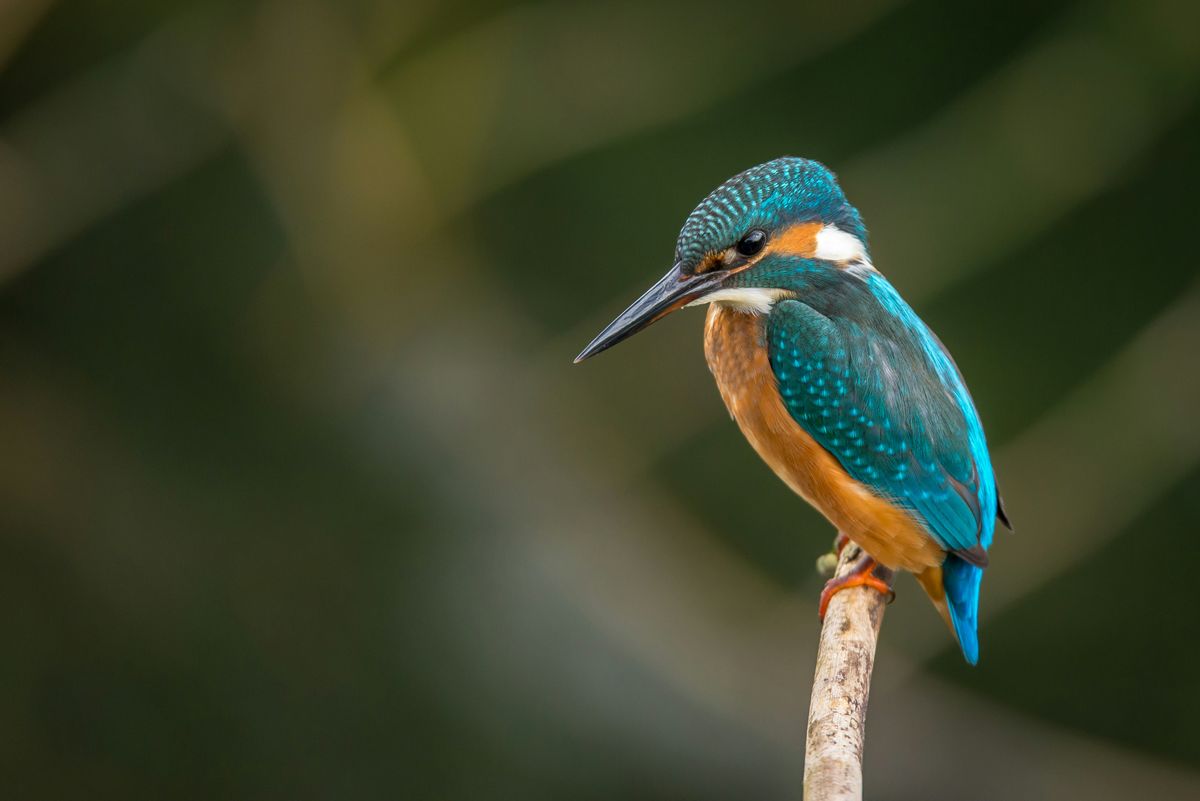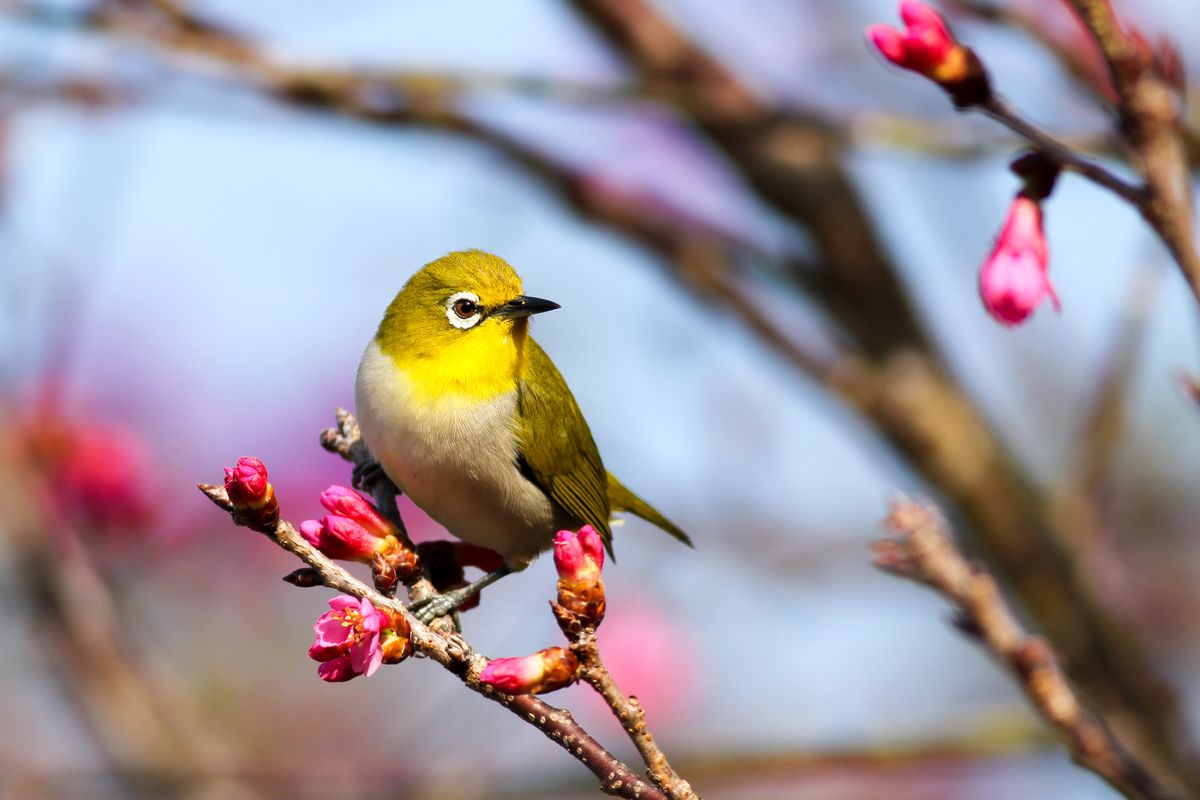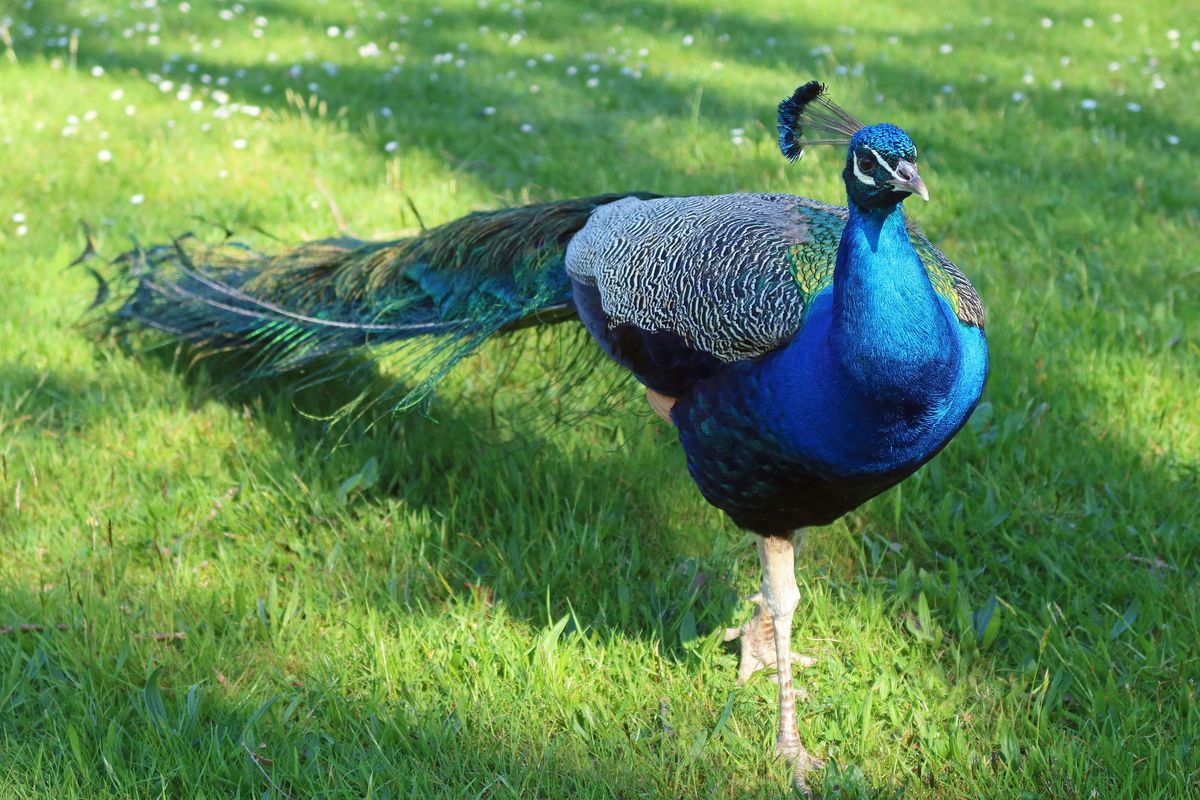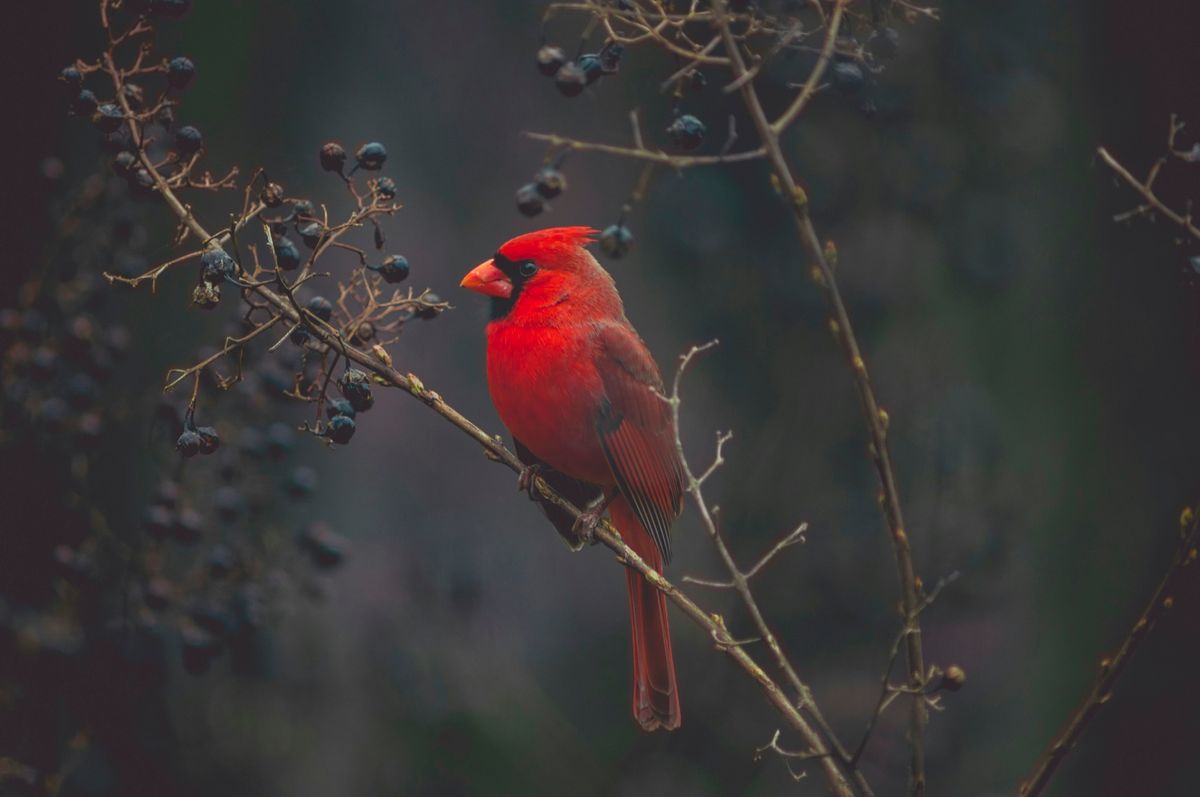The world of Variegated Birds of Paradise is a mesmerizing and vibrant one, filled with colorful characters and fascinating beauty secrets. In this article, we will explore the enchanting lives of these avian celebrities and delve into their habitat havens, challenges, and more.
Key Takeaways
- Variegated Birds of Paradise are known for their stunning colors and unique feather patterns.
- Feather maintenance plays a crucial role in the beauty and health of these birds.
- A balanced diet is essential for the well-being and vitality of Variegated Birds of Paradise.
- The elaborate dance moves and displays of these birds are a sight to behold.
- Conservation efforts are necessary to protect Variegated Birds of Paradise from threats like predators and climate change.
Meet the Colorful Characters

The Flamboyant King
In the realm of the Birds of Paradise, the Flamboyant King is a sight to behold. With his vivid plumage that outshines the lush greenery of the rainforest, he’s the embodiment of nature’s artistry. His feathers are not just a visual treat but also a tool for captivating potential mates.
The King’s daily routine is as meticulous as his appearance. Here’s a glimpse into his feather maintenance schedule:
- Pre-dawn preening to remove any debris
- Mid-morning sunbathing for that radiant sheen
- Afternoon showers to keep each feather perfectly aligned
When it comes to his courtship dance, the Flamboyant King is unrivaled. His elaborate moves are a mix of precise steps and dramatic flair, designed to impress and enchant. It’s a performance that combines beauty, strength, and a touch of the theatrical, much like the flamboyant bracts of the Heliconia psittacorum ‘Lady Di Variegata’.
The Elegant Queen
Amidst the flamboyant displays of her counterparts, the Elegant Queen stands out with her own brand of beauty. Unlike the showy King, her allure lies in her grace and subtlety. She doesn’t need the brightest colors or the most intricate dance moves to captivate an audience; her presence alone is enough to command attention.
The Queen’s plumage is a testament to her name, with feathers that flow and shimmer in the sunlight. Her diet plays a crucial role in maintaining this splendor. A typical menu might include:
- Nectar from the most vibrant flowers
- Fruits rich in antioxidants
- A selection of insects for protein
Her habitat is just as refined as her diet. The Queen prefers the serenity of the forest’s understory, where she can find solace away from the cacophony of the canopy. Here, she can nurture her young in peace, surrounded by the gentle rustling of leaves and the soft trickle of a nearby stream.
Yet, life is not without its challenges, even for royalty. Predators lurk in the shadows, and the Queen must always be vigilant. Her survival strategies are as elegant as her appearance, relying on stealth and quick thinking to evade threats. She is a true master of her domain, a regal figure that embodies the delicate balance of nature.
The Mysterious Stranger
Beneath the vibrant canopies of the rainforest, there lurks a bird so elusive, it’s often referred to as ‘The Mysterious Stranger’. With a plumage that shimmers in the dappled sunlight, this bird is a master of disguise, blending seamlessly into its surroundings.
While much about this bird remains a mystery, here are a few fascinating facts we’ve managed to uncover:
- The Mysterious Stranger is known for its unique mating call, which can vary greatly from one individual to another.
- Unlike its more flamboyant relatives, this bird opts for subtlety over showiness, with muted colors that provide camouflage rather than attraction.
- Sightings are rare, and often only confirmed by the distinctive feathers found by lucky researchers.
Despite its secretive nature, the Mysterious Stranger plays a crucial role in the ecosystem. It’s a reminder that not all beauty seeks the spotlight—some prefer the quiet allure of the shadows. As we continue to experience the magical world of these birds, we must also remember the importance of preserving their habitats, ensuring that they remain part of our world’s natural heritage.
Unveiling the Beauty Secrets

The Art of Feather Maintenance
Birds of Paradise are the epitome of natural splendor, and their feather maintenance is a meticulous process that’s crucial for their vibrant appearance. Feathers not only play a key role in attraction but also in protection and temperature regulation. Just like you might find tips on a website for DIY home decor, these birds have their own set of routines to keep their feathers in top shape.
The process is quite similar to how one would approach the care of fine silverware; it’s all about gentle, regular upkeep. Birds of Paradise often bathe in rainwater or dew to cleanse their plumage. They also spend a considerable amount of time preening, which involves using their beaks to align feathers, remove parasites, and apply protective oils. Here’s a quick rundown of their daily spa routine:
- Morning Bath: A dip in the nearest water source to remove any dirt or debris.
- Preening Session: Aligning each feather perfectly and distributing oils.
- Sunbathing and Dusting: To dry off and eliminate any lingering pests.
This routine ensures that their feathers remain as dazzling as the beauty berries in your garden, catching the eye of any potential mate or rival.
Dietary Delights
Birds of Paradise aren’t just a visual treat; their diets are as eclectic as their vibrant plumage. They feast on a smorgasbord of fruits, nectar, and the occasional insect, ensuring they have all the energy they need for their elaborate courtship displays. But it’s not just about energy; these foods are packed with the nutrients necessary for maintaining their dazzling feathers.
What’s on the menu for these feathered fashionistas? Let’s take a peek at some of their favorite treats:
- Fruits: A staple in their diet, especially figs and berries.
- Nectar: Sipped from the blossoms of tropical flora, like the Strelitzia nicolai.
- Insects: Snacked on for protein, particularly during breeding season.
Interestingly, the bird of paradise plant, often associated with these birds due to its name, isn’t actually part of their diet. However, the plant’s popularity, much like the birds themselves, has soared, with the giant bird of paradise becoming a household favorite in recent years.
Dance Moves and Displays
Birds of Paradise are not just about static beauty; their dance moves and displays are a spectacle of nature’s choreography. Each species has developed a unique set of moves to woo potential mates and assert dominance. The Flamboyant King, for instance, fans out its feathers in a shimmering cape, while The Elegant Queen prefers a more subtle approach, with gentle bobbing and intricate footwork.
The Mysterious Stranger takes the performance to another level with its aerial acrobatics, often leaving onlookers in awe. These dances are not just for show; they play a crucial role in the survival of the species, ensuring that only the most fit and attractive individuals get to pass on their genes.
Here’s a quick rundown of some signature moves:
- Flamboyant King: Vibrant cape display
- Elegant Queen: Graceful bobbing
- Mysterious Stranger: Aerial acrobatics
While we can’t replicate the full splendor of these displays, we can certainly appreciate the dynamic movement and the beautiful blend of colors that make each performance a breathtaking experience.
Habitat Havens and Hideouts

Tropical Paradise Retreats
Birds of Paradise have a knack for picking the most exquisite tropical locales to call home. These retreats are not just about the lush foliage and abundant food; they’re a complex tapestry of safety, beauty, and community.
- Lush foliage provides both camouflage and a playground for their vibrant courtship dances.
- Vibrant flowers are not just a feast for our eyes but a banquet for these birds, offering nectar and attracting insects.
- Water features, from trickling streams to cascading waterfalls, offer both a source of refreshment and a serene soundtrack to their daily lives.
Creating such a habitat in your own yard might seem like a distant dream, but with a bit of creativity and understanding of these birds’ needs, you can bring a slice of their paradise to your doorstep. Remember, while we can’t replicate the complexity of their natural habitats, we can certainly draw inspiration from them to enhance our own environments.
Secret Nests
Birds of Paradise are as secretive as they are spectacular when it comes to their nesting habits. Nest placement is a critical decision for these avian architects, as it can mean the difference between a thriving brood and a vulnerable one. They often choose locations that are hidden from the prying eyes of predators and curious humans alike.
Here’s a peek into their nesting choices:
- High in the canopy, away from ground threats
- Within dense foliage, for camouflage
- Near food sources, for easy access
- In areas with minimal human disturbance
These birds don’t just pick a spot; they create a haven. The construction of the nest itself is a marvel, with some species using intricate weaving techniques to create a sturdy home. Regular maintenance is essential, much like a homeowner’s guide on roof maintenance, ensuring their nests withstand the elements and remain a safe retreat for their chicks.
Community Connections
Birds of Paradise are not just solitary show-offs; they’re also social butterflies of the forest canopy. Their social structures are complex, involving various forms of cooperation and competition. For instance, during mating season, males often gather in a communal display area known as a lek, where they strut their stuff in front of discerning females.
Building a thriving community among these feathered friends involves more than just showing off vibrant feathers. Here are some tips that parallel our own efforts to foster social connections:
- Expand your social circle by mingling with different species
- Be approachable, even to birds outside your usual flock
- Step out of your comfort zone, perhaps by visiting different parts of the forest
- Volunteer for communal activities, like shared predator watch
- Nurture existing relationships with mutual preening
- Embrace technology mindfully, like using the acoustics of the forest to amplify your calls
Just like us, Birds of Paradise need to balance their dazzling solo displays with the benefits of a supportive community. Whether it’s finding a mate or warding off predators, these birds know that there’s strength in numbers.
Challenges of the Avian Celebrities

Predator Precautions
In the wild, Birds of Paradise must constantly be on alert for predators. Their vibrant plumage can be a double-edged sword, attracting mates and predators alike. To mitigate this, they’ve developed some clever strategies.
Firstly, their nesting sites are chosen with utmost care. High in the treetops or in dense foliage, these locations offer protection and a vantage point to spot any approaching danger. It’s crucial that these nests have strong, predator-resistant walls and no gaps or weak spots that predators can exploit.
Here’s a quick rundown of their anti-predator tactics:
- Camouflaged nests to blend with the surroundings
- Alarm calls that signal the presence of predators
- Flight patterns that are erratic and unpredictable
While these tactics are instinctual, they’re akin to us prepping for a party—ensuring everything is in place for a successful event. For Birds of Paradise, it’s not about entertainment, but survival.
Climate Change Concerns
As we delve deeper into the challenges faced by birds of paradise, climate change stands out as a formidable foe. These avian wonders are accustomed to stable conditions in their tropical habitats, but as the climate shifts, so does the delicate balance of their ecosystems.
The impact of climate change is multifaceted. For instance, alterations in temperature and rainfall patterns can lead to mismatches in food availability. This is particularly troubling for species like the false bird of paradise, which rely on specific dietary needs to maintain their vibrant plumage. Moreover, extreme weather events, such as cyclones and droughts, can devastate their habitats, leaving them vulnerable to predators and other threats.
To illustrate the severity, here’s a snapshot of the changes observed:
- Temperature Rise: Increased by 1.5 degrees Celsius over the past century
- Rainfall Patterns: Shifts leading to prolonged dry seasons
- Habitat Loss: Up to 30% reduction in some areas
These statistics are a stark reminder of the urgency with which we must act to protect these magnificent creatures and their homes. Conservation efforts are crucial, and understanding the nuances of their needs, such as the allure of Clusia hedges for privacy or the specific care for Heliconia Rostrata, can inform better habitat management strategies.
Survival Strategies
In the wild, Birds of Paradise have developed a suite of survival strategies to thrive despite the challenges they face. Just like organizing a digital space can streamline your life, these birds have their own ways of streamlining survival.
- Camouflage: Blending into the lush foliage, they avoid the prying eyes of predators.
- Mimicry: Some species imitate the sounds of other animals as a decoy.
- Social Structures: Flocks often work together to alert each other of dangers.
These tactics are akin to the care needed for a delicate plant like the Variegated Sandy-leafed Fig, which requires specific conditions to flourish. Similarly, Birds of Paradise must adapt to their environment’s nuances to survive.
Frequently Asked Questions
What do Variegated Birds of Paradise eat?
Variegated Birds of Paradise primarily feed on fruits, insects, and small animals like lizards and frogs.
How do Variegated Birds of Paradise attract mates?
Male Variegated Birds of Paradise perform elaborate courtship displays involving vibrant plumage and intricate dances to attract females.
Where can Variegated Birds of Paradise be found in the wild?
Variegated Birds of Paradise are native to the rainforests of New Guinea and surrounding islands in the South Pacific.
Do Variegated Birds of Paradise migrate?
Variegated Birds of Paradise are non-migratory birds that typically stay within their home range throughout the year.
Are Variegated Birds of Paradise endangered?
While some species of Variegated Birds of Paradise are threatened by habitat loss and poaching, others are considered of least concern by conservationists.
How long do Variegated Birds of Paradise live?
Variegated Birds of Paradise have varying lifespans depending on the species, with some living up to 10-15 years in the wild.
